Daisies are a kind of flowering plant that belongs to the largest plant family on Earth. The daisy flowers with white petals and a yellow center are the most popular kind of daisy flower. Due to their star-shaped form and exquisite petals, most daisy flowers are simple to recognize. Many daisy species have lovely brilliant blooms that can brighten up any garden, despite the fact that some are invasive and considered weeds.
The family Asteraceae and order Asterales contain a number of genera (groups) of blooming plants. Almost 1,500 genera of plants belong to the Asteraceae family, and many may be referred to as daisies. Daisies are connected to plants like sunflowers, gerberas, asters, marigolds, chrysanthemums, and zinnias as a result of this categorization. Most daisy species need at least 6 hours of direct sunlight a day and a rich, well-draining soil to thrive.
Are Daisies Annuals or Perennials?
Daisies come in two types: annual varieties that bloom for just one season and perennial variants that bloom year after year, depending on their species and growing environment. Several daisies are delicate perennial plants that cannot withstand the harsh winter and die. They are classified as annuals because they only grow one year in cold temperatures.
In USDA zone 4-8, where the minimum winter temperature may fall below −30°F (−34°C), the common daisy is a cold hardy perennial plant that is commonly grown. Gerbera daisies, on the other hand, grow in zones 8 through 11 and are not cold hardy. They can be grown as annuals in zones 8 and higher, or they may need winter protection.
Warm winters are necessary for both Osteospermum (African daisy) and Marguerite daisy, which are considered tender perennials. They are grown as annuals everywhere except USDA zones 10-11, where they are cold hardy.
How to Identify Daisies?
The star-shaped bloom of the common daisy has long white petals that fan out from a yellow core and is recognized by this. Hundreds of daisy types may be found, from modest flowers with a single row of petals to spectacular varieties with double blooms.
Daisy Flower Color
Daisy blooms come in a variety of hues, including yellow, orange, red, and pink. The color of daisy blooms ranges from the traditional white petals that surround a yellow center to Gerbera daisy blooms. You’ll learn about a few of the most well-liked daisies that bloom from late spring to early autumn, and they’ll add a pop of color to your garden.
Types of Daisies (With Pictures and Names) – Identification Guide
Depending on their distinguishing characteristics, all kinds of daisies in the Asteraceae family are divided into a variety of genera. Let’s take a closer look at some of the most common daisy varieties you may cultivate in your yard.
Bellis Daisies
Some of the most prevalent forms of daisies you’ll come across are those from the Bellis genus. Bellis daisies, which bloom in the summertime, are generally considered to be perennials.
English daisies (common daisy)

The English daisy, sometimes known as Bellis perennis, is a common perennial daisy. The English daisy, or lawn daisy, and its scientific name are Bellis perennis. The common daisy is also known as the lawn daisy. Several gardeners consider this invasive daisy to be a weed because of its popularity.
One of the most distinguishing characteristics of English daisies is their color. They are blooming perennial plants with pure white petals that spread out from a yellow core. A solitary blossom rises on top of a leafless stalk, measuring 0.8″ to 1.1″ (2 – 3 cm) in diameter. Traditional herbal medicine includes edible leaves of Common English daisies.
Annual Daisy (Bellis annua)
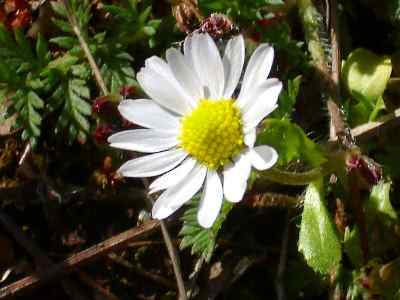
The only annual type of daisy in the Bellis genus is Bellis annua, which has little white flowers with a yellow center. The wide white petals of the Bellis annua daisy are unique, as are the other daisy flowers, as they have a yellow center and are not as long. The small flowers of this kind of daisy can also be used to detect it. These little flowers are just 0.4 inch (1 cm) in diameter.
Leucanthemum Daisies
The genus Leucanthemum contains a diverse collection of gorgeous daisy species. many of the most dazzling daisies are cultivated for their decorative value and enhance cut flower displays.
Oxeye daisies

Oxeye daisies (Leucanthemum vulgare) are a species of plants in the daisy family with bigger blooms than the ordinary daisy. This is a 20 inch (50 cm) tall perennial daisy that produces flowers with a 2 inch (5 cm) diameter. White petals and a yellow center characterize Oxeye daisies, which have the traditional daisy fan floret shape.
Shasta daisies

Shasta daisies (Leucanthemum superbum) are comparable to oxeye daisies in terms of height and flowerhead size. Throughout the summer, in your garden, this perennial bushy daisy produces white petals with a yellow center. They’re also simple to cultivate and require full sun in order to thrive. Shasta daisies have lovely white flowers on each stem and grow to be between 2 and 4 feet (60 and 120 cm) tall.
‘Crazy Daisies’ (Leucanthemum)
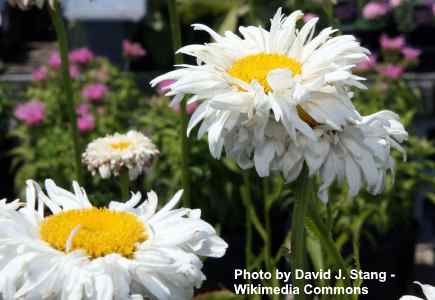
The bushy blooms of the daisy cultivar ‘Crazy Daisy’ feature multiple rows of white petals. The genus Leucanthemum contains these yellow and white daisies. Multiple rows of long, slender white petals characterize their blossoms. This aids to produce bushy flowerheads that are both appealing in containers and in gardens.
‘Banana Cream’ Daisy (Leucanthemum)
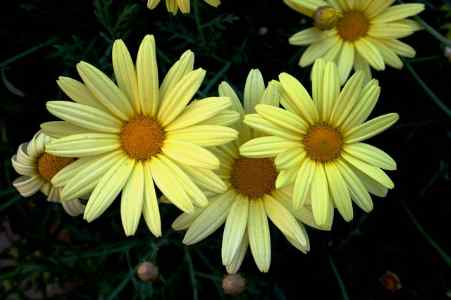
It’s no surprise that there are various huge kinds of yellow daisy flowers since daisies are linked to sunflowers. The “Banana cream” cultivar is one of them. The 5″ (12 cm) starry flowers of the Banana cream daisy cultivar are huge. The banana cream daisy has yellow-cream blossoms that contrast beautifully against the dark green leaves, as its name implies.
Gerbera Daisies

Gerbera Daisies (the daisy subfamily Mutisioideae) are well-known as cut flowers and come in a variety of colors. Red, yellow, white, and multicolored Gerbera daisy blooms are available in a variety of colors. Since they are native to that nation, some varieties of gerbera are also referred to as African daisies. The popularity of Gerbera daisies is such that they are ranked among the top 100 flowers in the world.
Gerbera ‘jamesonii’ daisy
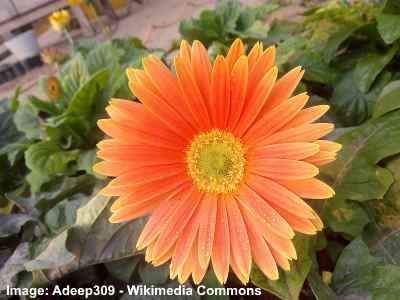
Gerbera jamesonii is a very popular kind of gerbera daisy. Barbertonse madeliefie, or Barberton daisy, are other names for this plant. Outside and indoors, these daisy flowering plants bloom as perennials. Gerbera ‘jamesonii’ daisy blooms come in a variety of colors, including red, yellow, orange, and pink.
They are placed on top of a thick upright stem. Long slender petals form a circle around a yellow-cream-colored center disk, forming the daisy flower. The flowerheads range in size from 3 to 4 inches (7 to 10 cm).
Lollipop gerbera daisy

The gerbera daisy cultivar ‘Lollipop’ has a beautiful and showy flowerhead. There are a variety of ‘lollipop’ cultivars, much as with species of gerbera daisies. Flowers with two layers of colorful petals are common on gerbera daisies known as “Lollipop.” All gerbera have a layer of long, slender petals. They also feature a smaller ring of contrasting-colored shorter petals. Gerberas with the name of ‘Lollipop’ grow as annuals in most climates.
Chrysanthemum Daisies
The word chrysanthemum comes from the Greek word for “golden flower.” This daisy family is known as the Chrysanthemum family. Several species of dazzling daisy blooms belong to the plant family Tanacetum.
Painted daisies
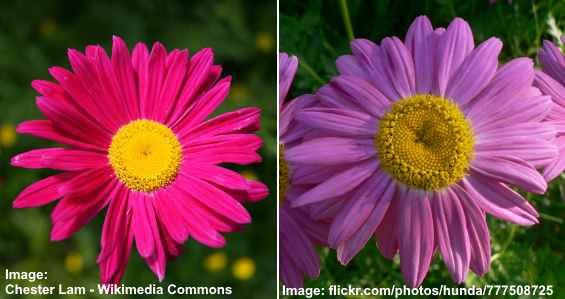
Painted daisies are annual plants with lovely pink, purple, and red blooms that bloom for a long time. These everlasting daisies bloom from early summer until the season changes. A star-shaped blossom with a broad yellow circle in the center is seen on painted daisies.
The large number of flowers on the plant is one of the reasons why these daisies are so popular. The bushy type of daisy plant with flowers ranging from pink, red, purple, and white is a lovely addition to your summer landscape. Painted daisies are a excellent option for cut flower arrangements because of their long, sturdy, straight stems. Their gorgeous ray blooms also stay in a vase for a long time.
Golden feverfew daisies

The ‘golden feverfew daisy’ (Tanacetum parthenium ‘Aureum’) is a popular variety of daisy with short oval white petals and a huge yellow core. The traditional white petals with yellow centers that daisies are known for are seen on these tiny daisy blooms. A single row of short oval petals fan out from a huge golden yellow center in a circle. Since they only grow to about 12″ – 24″ (30 – 60 cm) tall, low-growing, sun-loving perennials are a excellent option for borders.
Tanacetum coccineum ‘Robinson’s Red’ daisy
The cultivar known as the Robinson’s Red is one of the most stunning chrysanthemum daisies. The petals of this beautiful daisy are deep pink or magenta, with a bright yellow disk in the middle. Foliage on this daisy plant looks like ferns, which adds bright and bulk to chopped flower displays.
Arctotis Daisies / Osteospermum (African Daisies)

African daisy flowers are among the most colorful of all daisy flowers. These daisy plants produce some of the most vibrant daisy blooms available. To brighten up your garden or room, let’s look at a few of the most popular ones.
Arctotis daisies
In colder weather, daisies in the Arctotis genus may need to be taken indoors. These daisies, which may grow to be 12″ to 24″ tall (30 cm) and have a spread of 12″, are commonly found in clumps. Here are a few of the most popular Arctotis daisy cultivars:
The Ravers ‘Pumpkin Pie’ The gerbera-like flower head of this magnificent African daisy is a sight to behold. The deep orange flowers of this lovely bright daisy are surrounded by a yellow ring and have a black disk center.
Arctotis hybrid ‘Wine’ Daisy petals are in a fan shape and have delicate pink and white colors. The center of the flower is a grayish-white color, and the petals become darker as you go near them.
Arctotis hybrid ‘Flame’ With its fiery-orange spiky-looking petals, this African daisy flower lives up to its name. The huge blooms atop the tall stems are 4 inches (10 cm) broad.
Osteospermum African daisies
Flowers in the Calenduleae tribe and genus Osteospermum are also classified as daisy genera. The blooms are among the most lovely, even though this is one of the lesser genera of African daisies. From the genus, here are a few of the most stunning African daisies.

Osteospermum ‘Soprano Purple’ Because of its deep purple, almost black center, it is a stunning type of African daisy flower. In early summer, the elongated oval leaves produce lovely blooms that range in color from purple to pink. You’ll get a mound of stunning purple or lilac daisy blossoms with each plant.
Brightly-colored yellow colored petals with a little black center make up the Osteospermum ‘Lemon Symphony’ daisy. The petals create a dark purple ring towards the center of these daisies, if you examine them closely in photographs. With their yellow blooms, plant these in full sun to cheer up your garden. The ‘Orange Symphony’ is a comparable African daisy cultivar.
Osteospermum ‘Bright Lights Double Moonglow’ Among the African daisy types, it is one of the most gorgeous. This lovely kind of daisy has creamy-yellow petals and a bushy yellow center surrounded by its flowers. This daisy variety produces short clumps that are no more than 12 inches (30 centimeters) tall. Apart from the s, it has a similar sound.pectacular showy flowers, this perennial daisy blooms from late spring right up until the first frost.
Argyranthemum Daisies (Paris daisy / Marguerite daisy)

Argyranthemum Daisies are white, yellow, or pink blooms with a variety of petal forms. These Paris daisies (also known as marguerite daisies) bloom as perennials in most mild regions. They may not thrive in chilly winters, and you’ll have to replant them every year in certain areas. The flowers of several of the most popular cultivars in this genus are spiky. Paris daisies are grown for their ornamental value because of their showy display of starry flowers.
The flowers of most types are entirely white and have lance-shaped petals. They spread out from a bushy core to create an exquisite asterisk shape. These daisies come in a variety of colors, including yellow and pink. Small daisy-like flowers with oval, rather than spiky-looking petals are seen on some varieties of marguerite daisies.
Coneflowers
Coneflowers are a common name for daisies in the Rudbeckia and Echinacea genera. Their petals tend to droop down from the center to form a cone shape, which gives them the name coneflowers. Most coneflowers are highly hardy perennial daisies that bloom towards the conclusion of autumn and are among the last to do so. The following are some of the top and most popular daisy-family coneflowers:
Black-eyed Susan
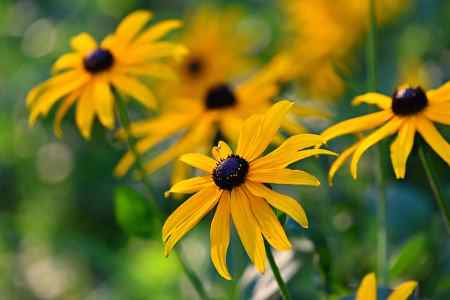
Black-eyed Susans (Rudbeckia hirta) are yellow daisy blooms that create a burst of yellow in the autumn. The majority of rudbeckia blooms have yellow petals. The petals of most daisy varieties are large and attractive, with a black center that contrasts.
Simple flowers with a row of long yellow petals, such as Black-eyed Susan cultivars like ‘Indian Summer’ or ‘Little Henry,’ are called coneflowers. Large bushy flowers in various hues of reds, oranges, and yellows are seen in other showy cultivars such as ‘Cherokee Sunset’ or ‘Sonora.’
Echinacea coneflowers
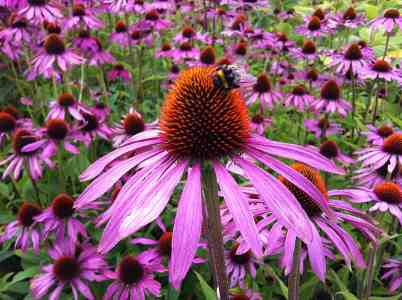
Echinacea flowers are reddish cone-shaped at the center and have purple petals. These daisy varieties are simple to cultivate and can handle a wide range of garden conditions. Planting a lot of purple daisy blooms in group will give you a variety of autumn colors for your yard.
Echinacea purpurea is the most prevalent form of echinacea. A reddish showy cone-shaped center contrasts with the lilac-purple petals of this flower. The following are some of the most remarkable Echinacea daisy-type flower cultivars:
Echinacea ‘Flame Thrower’ The petals are two-toned red and orange, with a brown red center cone. The orange blooms and autumn hues of this tall daisy plant brighten up your garden.

Echinacea ‘Double Delight’ Echinacea has double flowers, which makes it one of the few. The flower is a pompom-shaped bushy blossom, with drooping pink petals radiating out from the center.
Echinacea ‘Tomato Soup’ A dark-brown ball-shaped center supports huge tomato-red petals that droop down. With flowers that are roughly 6″ (15 cm) broad, the Echinacea genus has some of the biggest in the world. In the autumn, plant a garden of crimson daisies for a spectacular display.
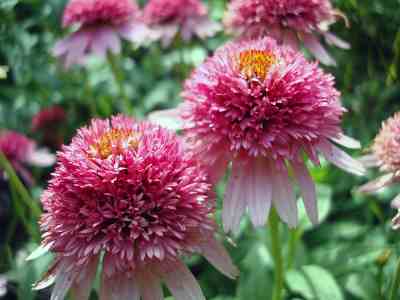
Echinacea pallida The long, thin drooping purple blooms distinguish this kind of Echinacea blossom. In contrast to their dark green leaves, these lovely daisy plants with their slender flowers are quite lovely.

Echinacea ‘White Swan’ It has the characteristics of both an Echinacea plant and a daisy. A yellow cone-like core emerges from a shaft of small white petals that surround it, with a ray of yellow petals. These are late-season pollinators magnets since they are so hardy.

Other Types of Daisies
There are a variety of additional daisy species that grow in the wild, in addition to the most common daisies mentioned in this list.
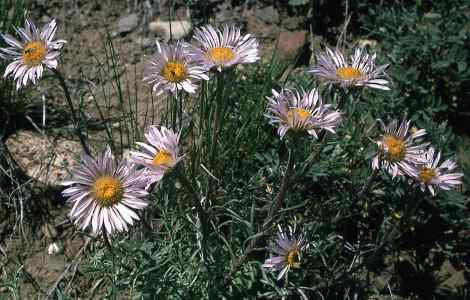
Townsendia daisies They’re a kind of high-elevation wildflower that blooms. These blooming plants may be annuals or perennials depending on the species. They are white and yellow. Several species have tall stems with lovely blooms that produce ray florets. Little daily plants with a spreading habit are another indigenous species.
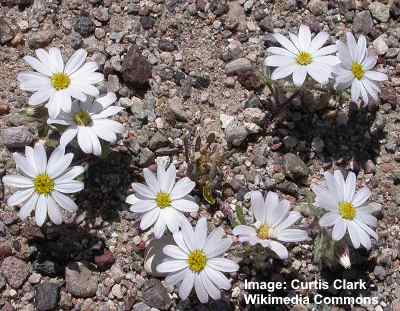
Monoptilon daisies are native to North America and are annual flowers with a bell-shaped petal. Annual daisy plants in this genus are small. Like the rays of the sun, daisy blooms have tiny white petals with a yellow center.
